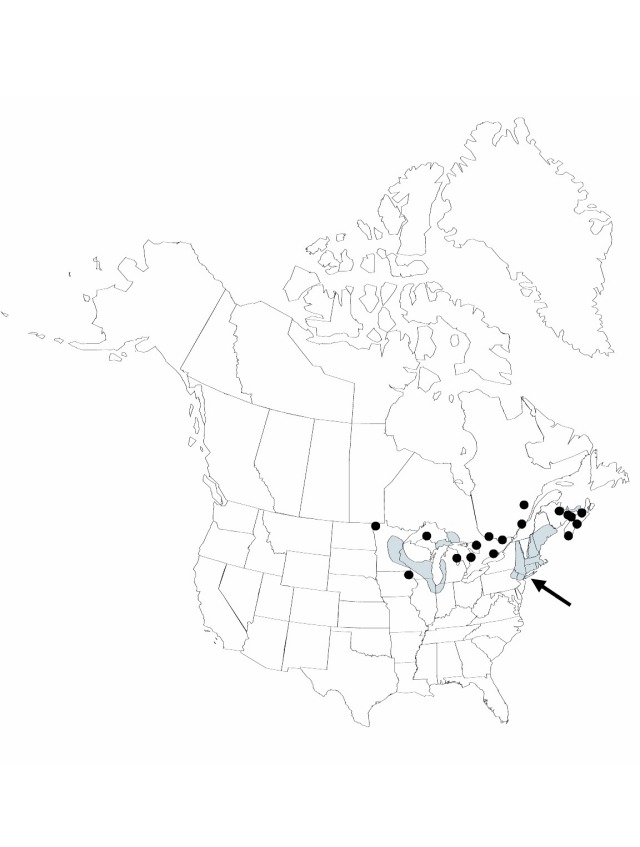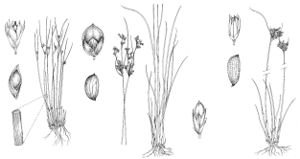Juncus greenei
American Journal of Science, and Arts 45:37. 1843.
Herbs, perennial, tufted, to 7 dm. Rhizomes short, densely branched. Culms 1–30. Cataphylls 1–2. Leaves basal, (1–)2–3; auricles (0.2–)0.4–0.6 (–0.8) mm, scarious, rarely ± leathery; ; blade dark green, nearly terete, 5–30 cm × 0.4–0.8 mm, margins entire. Inflorescences terminal, 5–50-flowered, usually congested, 1–8 cm; primary bract usually surpassing inflorescence. Flowers: bracteoles 2; tepals dark green or darker, lanceolate, 2.5–4.2 mm; outer and inner series nearly equal, apex acute; stamens 6, filaments 0.5–0.8 mm, anthers 0.5–0.8 mm; style 0.2 mm. Capsules chestnut brown or dark brown, infrequently lighter, 3-locular, ellipsoid, (2.5–)2.9–3.5(–4) × (1.1–)1.5–1.8 mm, slightly exceeding tepals, apex somewhat truncate. Seeds dark tan, ellipsoid to lunate, 0.48–0.65–(0.7) mm, not tailed. 2n = ca. 80.
Phenology: Flowering and fruiting summer.
Habitat: Usually dry, well-drained, sandy soil in pine lands, near lake shores, or among sand dunes and often associated with disturbance
Distribution

N.B., N.S., Ont., P.E.I., Que., Conn., Ill., Ind., Iowa, Maine, Mass., Mich., Minn., N.H., N.J., N.Y., Ohio, Pa., R.I., Vt., Wis.
Discussion
Selected References
None.
